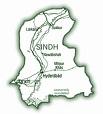Contribute
| Sindhi Language And Literature |
Press Release
03/26/2008
Niranjan Dudani, MD and Prakash Parwani recently delivered a presentation on Sindhi Language and Literature at Harvard University. The presentation was part of a series of presentations on Indian Languages and Literature, organized by Department of Sanskrit, Harvard University.
Dr. Bijoy Misra introduced the speaker Niranjan Dudani, MD - a practicing doctor, poet, writer and nationalist who came to USA 35 years back after serving 20 years in the Indian Navy. He and his family had to leave Sindh and move to India after the partition. Prakash Parwani came from Sindh 3 years back. Briefly, Dr. Misra stated that Sindhu or Indus civilization centered in Sindh as a large metropolis trading with many countries by sea and land. Its script was still undeciphered. May be if they took into account the Sindhi language that had so many distinct letters and sounds, it would help. Sindhu occurs as a mighty river, a male deity, as prosperous rich land, and as vast sea in Rig Ved. Later in epics and after that it was subject to many invasions and foreign conquests that had influenced the language. Sindhu gave the identity to India -from Indus to India, to Hindu. Unfortunately no record of language was available. Dr Dudani will take us thru history and the evolution of language, the Sindhi literature that followed the path of Bhaktivad or Devotional Monotheism prevailing on the sub-continent.
According to Dr. Dudani, Sindhi was spoken by about 17 million people in Sindh, Pakistan and about 3 million mostly in India. In 1967, Sindhi was formally included as a national language in the constitution of India. In mid 19th century, Dr. E. Trumpp and other philologists generally agreed that Sindhi belonged to the family of Sanskritic and Prakrit languages. It had many special characteristics that made it a very ancient language.
The Indus civilization with its nucleus metropolis in Sindh had left only undeciphered script. Later Rig Veda proclaims the mighty Sindhu River and prosperous region around it. Major epics - Ramayana and Mahabharata - have mentioned the region as Sindhu Desh, with no known record of the language. Later the region came under repeated Persian, Greek and others occupation. The Rajput rulers redeemed Sindh to yield to Arab conquest in 711 AD. All that had left its marks in Sindhi language. In the 11th century Rajputs converted to Islam freed Sindh again. Scholars generally agree that Sindhi emerged in its present form in the 11th century. The evidence was in the form of folklore and earliest manuscripts which belonged to 15th century.
From mid 18th to mid 19th century, prolific poetry was composed by many poets, notably the trio of Shah Latif, Sachal Sarmast and Chainrai Sami. All the poetry followed the tenets of Bhaktivad or Devotional Monotheism prevalent on the sub-continent. Islamic Sufism, Wahidat-al-Wajood blended with Advait Vedanta led to blossoming of Sindhi Sufism that had dominate
Sindhi literature till 1947. Examples of each of these poets were presented in songs from their compositions. In 1852, modified Arabic script was created for Sindhi and since then voluminous literature in all categories has been produced. Till 1940s it was secular, initially with colonial override, some Persian influence and from 1920s with patriotic fervor. From 1950s extensive literature has continued to be published. Couplets from such poets were also presented in a song form. Since then, Institutes of Sindhology and academies for research, encouraging new writers have also come into being in both countries.
Sindhi has 52 consonants, 40 were of ancient Sindhi origin and others of Farsi, Arabic. Complete alphabet was recited as taught in schools. An impromptu conversation like when friends meet was held by the two speakers. DUAA or Blessings - a collection from three poets mentioned above was sung followed by few items of recorded traditional folk music.
For further information about music, learning and preservation of Sindhi language, please visit:
www.ncpsl.org (National Council for Preservation of Sindhi language).
www.sindhiinfo.com for learning Sindhi
www.sindhiana.com for Sindhi Music
You may also access this article through our web-site http://www.lokvani.com/
